The first trading day of 2007 for the US markets proved to be quite tumultuous. Following rallies in other markets on January 2, the indices gapped up on the open and sentiment seemed to be upbeat about the better than expected outlook for retail and the consumer sector. After the release of FOMC minutes in the afternoon, the mood turned more negative as traders began to question the growing consensus view that the next move in short term rates will be downwards. A mid-afternoon sell-off lead to a pronounced range expansion with all indices registering wide intraday ranges. The Russell 2000 showed almost 20 points between its high and low for the session but ended almost exactly where it had on the last trading day of 2006
The energy sector was the principal casualty with oil services especially weak (RIG, GSF, VLO). Gold also sold off on a strengthening dollar and there was similar range expansion in the Treasury market but with little overall change at the close from where the session started. Since hitting a yield of 4.4% on December 1, the 10-year Treasury note has been moving steadily upwards and has added more than twenty five basis points as of yesterday's close.
As long as the market continues to give the benefit of the doubt to a soft landing scenario when weighing the conflicting evidence regarding the economy, the presumption is that the bullish moves in the second half of 2006 have further to go. If the prospect of a more hawkish Fed gains traction global liquidity conditions could turn a lot less friendly for equities.
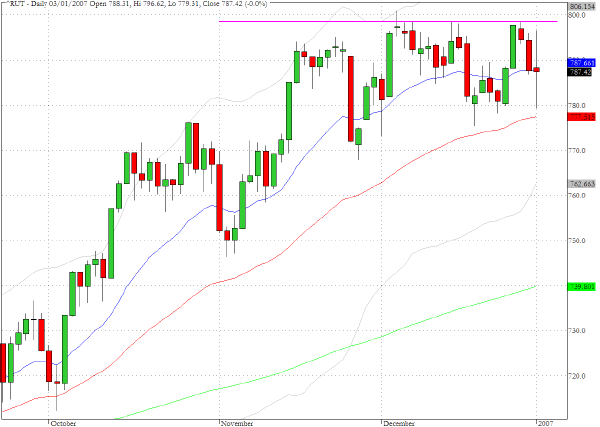
Despite the intraday fireworks that we have already noted the Nasdaq 100 index (^NDX) finished the session almost exactly at 1760 which represents a strategically important level for the index.

The oil services sector (^OSX) suffered a 4.4% fall as it broke down below its 200 day EMA yesterday and in so doing the clear upward trendline that extended back to the early October lows was violated.
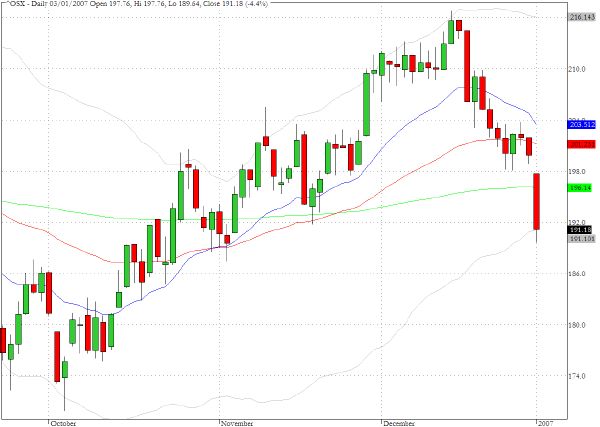
The chart for the CBOE Volatility index (^VIX) has been revealing far more erratic behavior since Thanksgiving in contrast to the subdued tone that was seen during the Sept-November period. In hindsight the historically low intraday value of 8.6 registered on December 18th (the long green candlestick) could have marked a significant inflection point.
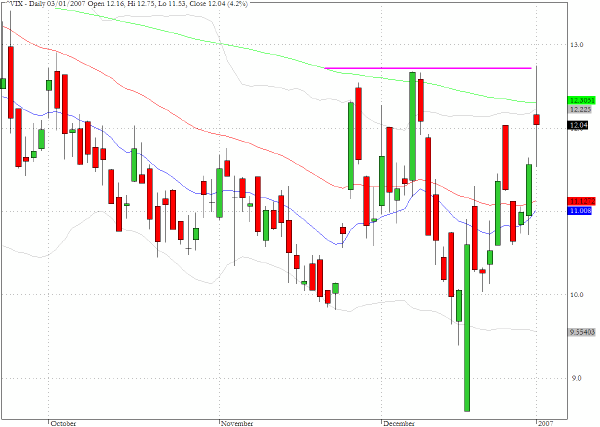
TRADE OPPORTUNITIES/SETUPS FOR THURSDAY JANUARY 4, 2007
The patterns identified below should be considered as indicative of eventual price direction in forthcoming trading sessions. None of these setups should be seen as specifically opportune for the current trading session.
Amerisource Bergen (ABC) produced an upward trend session yesterday that remained immune to the overall market's wobble.
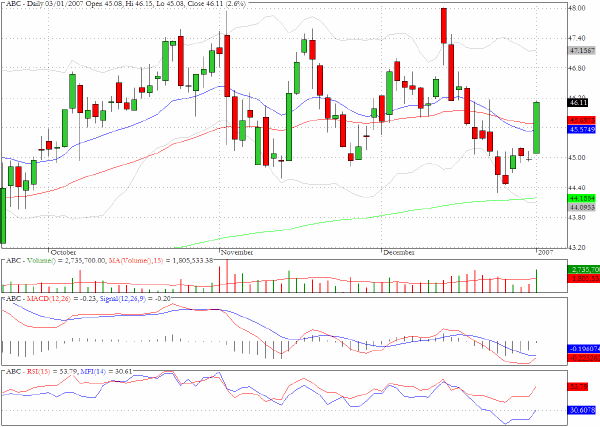
Komag (KMG) broke down from a descending wedge formation and closed just above the breakout level from late October. The long tail suggests that a rescue pattern may arise in the immediate future but we would suggest monitoring the stock for signs of further weakness.
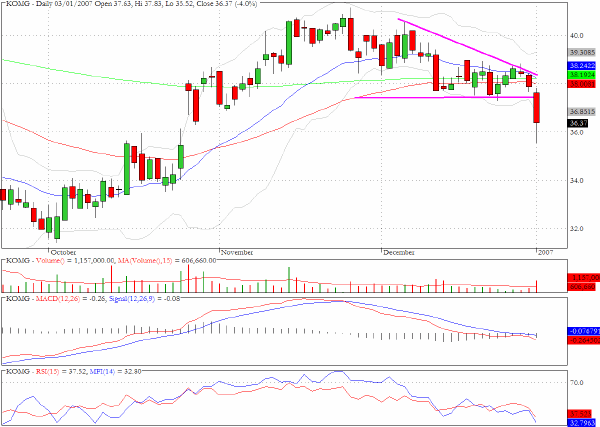
Wyeth (WYE) is in a congestion zone just below $52 but managed to peek above the highs that stretch back over the last two weeks.
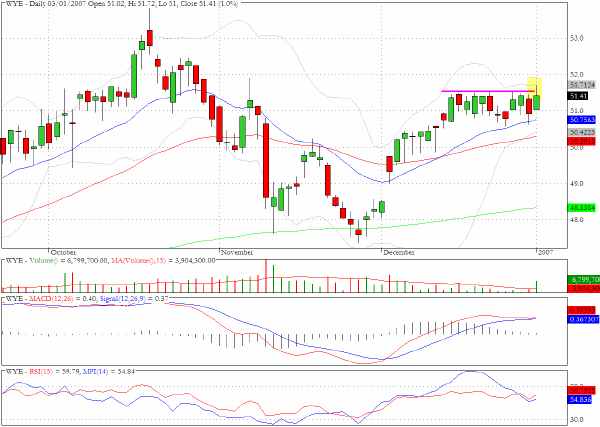
Clive Corcoran is the publisher of TradeWithForm.com, which provides daily analysis and commentary on the US stock market. He specializes in market neutral investing and and is currently working on a book about the benefits of trading with long/short strategies, which is scheduled for publication later this year.
Disclaimer
The purpose of this article is to offer you the chance to review the trading methodology, risk reduction strategies and portfolio construction techniques described at tradewithform.com. There is no guarantee that the trading strategies advocated will be profitable. Moreover, there is a risk that following these strategies will lead to loss of capital. Past results are no guarante of future results. Trading stocks and CFD's can yield large rewards, but also has large potential risks. Trading with leverage can be especially risky. You should be fully aware of the risks of trading in the capital markets. You are strongly advised not to trade with capital.